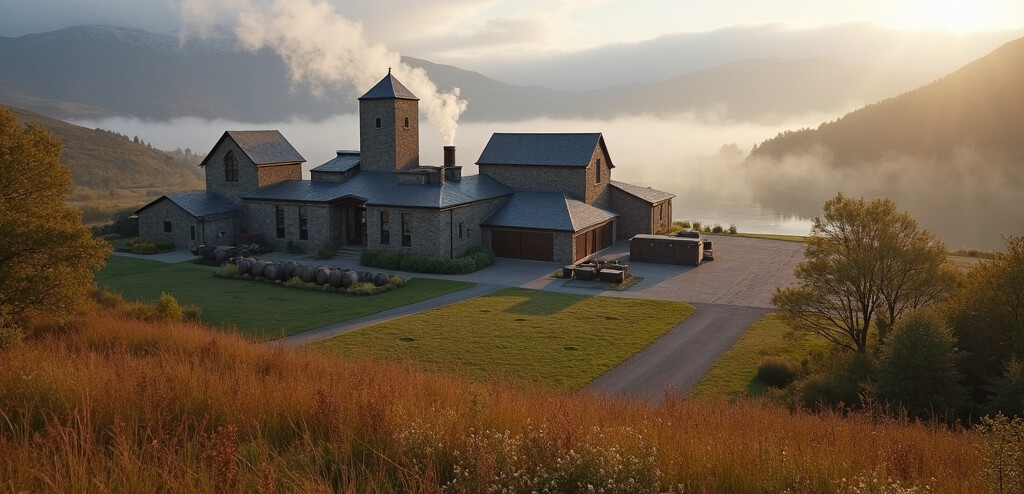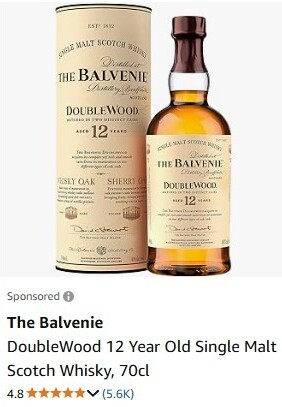So You Want to Get Into Highland Scotch Whisky?
I’m your host, KAD, and I’ve been slinging drinks and navigating the world of hospitality for over two decades.
Over the past 15 years, I’ve perfected my bartending skills, experimented with countless flavour combinations, and learned a thing or two about how to keep the party going behind the bar.
Whether you’re a seasoned bartender like me just looking for some fresh inspiration or a complete beginner who is eager to whip up impressive cocktails at home, Shake, Sip, Serve is here to be your guide.
In the below blog, I’ll be sharing my knowledge and experience on everything from classic cocktails and innovative new creations to essential bartending techniques and industry secrets. I’ll also be offering tips on stocking your home bar, mastering the art of presentation, and creating a memorable experience for your guests.
So, grab your shaker, dust off your favourite glassware, and get ready to embark on a delicious journey into the world of bartending!
Let’s shake, sip, and serve up something amazing together.
Disclaimer: This post contains affiliate links. If you purchase through these links, I may earn a small commission at no additional cost to you.
Alright mate, let’s have a little whisky chat. If you’ve ever stared blankly at the bottle shop shelf wondering what the heck Highland Scotch even is, you’re not alone. It can all feel a bit intimidating—so many bottles, so many fancy names, and way too many bearded men on labels.
But honestly? It doesn’t have to be that deep. Highland Scotch is actually one of the easiest and most enjoyable types of whisky to get into—whether you’re a total beginner or just keen to level up from mixing Coke with whatever’s in the cupboard (no judgement, we’ve all been there).
Let me walk you through it like a mate would—no fluff, no whisky snobbery, and maybe even a few sips along the way.
What Even Is Highland Scotch?
Okay, quick geography lesson (promise it’s short): Highland Scotch is whisky made in the Highlands of Scotland. Big region, loads of variety. Some are floral and light; others are smoky or spicy—it all depends on where it’s made and how. That’s part of the fun.
And yes, to be called “Scotch,” it has to be made in Scotland and aged in oak barrels for at least three years. Proper rules and all that. Highland whiskies often use local barley, fresh mountain water, and that cool, misty Highland air that gives them a real sense of place.
Basically: each bottle is a little postcard from the Highlands… only way more fun to drink.
What Does It Taste Like?
Honestly? It depends. There’s no single “Highland flavor”—which is why it’s such a good place to start. You could get something soft and honeyed one day, then smoky and spicy the next. It’s like mood swings, but make it delicious.
A few things that affect the flavour:
- Water—Mountain spring water can give a bit of a mineral kick.
- Peat—Some whiskies use peat to dry the barley, which adds smokiness (but not all do!).
- Barrels—Ageing in bourbon or sherry casks brings out sweet, fruity, or spicy notes.
- Time—Older whisky is smoother and more layered. But younger ones can be bright and bold.
Every bottle tells a different story, which makes it such a fun thing to explore. It’s kind of like wine… but with more kilts.
Don’t Know Where to Start? I got you.
The first time I tried to choose a bottle, I nearly walked out empty-handed because it was all too much. But here’s how to make it easy:
- Stick with the classics: Glenmorangie, Dalmore, and GlenDronach—these are beginner-friendly, smooth, and don’t blow your head off.
- Look at the age: 10- or 12-year-old whiskies are usually solid value and tasty without the crazy price tag.
- Check the label: Words like “light,” “fruity,” or “floral” = easy sipping. Smoky, rich, and spicy = bolder flavours.
And hey, if your local has a tasting night? Go. Sip. Chat to the staff. They’re usually more than happy to help you find something you’ll love.
How Do You Even Drink It?
There’s no “right way,” but here’s what I do—and it’s never steered me wrong:
- Use a proper glass if you can—one of those tulip-shaped whisky glasses is ideal because it traps the aroma. If not, a wine glass or tumbler will do just fine.
- Add a splash of water—just a couple of drops can totally change the flavour. Makes it smoother and opens everything up.
- Sip slowly—let it sit on your tongue. Notice how it changes the longer it’s in your glass. This isn’t a Friday night vodka shot.
Some people add ice. Some don’t. Do what tastes good to you. No whisky snobbery here.
Quick tip: If you’re getting into whisky, a set of nice glasses or even a cute little bar cart setup is a total vibe—and makes your drinks feel a bit more special.
A Few Things to Keep in Mind Before Buying
- Budget: You don’t have to spend a fortune. Plenty of great bottles sit under $100.
- Flavour vibes: Start with something on the gentle side unless you already know you like smoky or intense stuff.
- ABV (alcohol content): Most Scotch is around 40–46%. Higher ABV means more punch, but not always more flavour.
- Storage: Keep your bottle sealed, out of direct sun, and upright. That way it’ll stay fab for ages.
Good Bottles That Won’t Break the Bank
Here are a couple of solid picks to kick things off:
- Glenmorangie Original 10-Year—Light, citrusy, and super easy to drink.
- GlenDronach 12-Year – A little richer, with warm sherry vibes. One of my personal favourites.
Both are usually easy to find here in Australia (Dan Murphy’s or your local bottle-o should have them), and they make a great first impression.
Want to Go a Bit Deeper?
Once you’ve got a feel for it, try this:
- Do a little tasting night at home—grab two or three bottles and taste them side by side. You’ll really start to notice the differences.
- Try a blind tasting—cover the labels and see what you actually like without the brand bias.
- Pair it with snacks—dark chocolate, salty nuts, or sharp cheese work beautifully with a dram.
- Visit a distillery (if you ever get to Scotland)— Genuinely unforgettable. Plus, free samples. Say less.
If you’re getting nerdy about it (I see you), a whisky journal can help you keep track of your faves.
Solid Highland Distilleries to Try
Here’s your go-to list if you want to start building your collection (or just sound fancy at dinner):
- Glenmorangie—Easy-drinking, floral, perfect intro whisky.
- Dalmore—Rich and chocolatey. Very luxe.
- GlenDronach—sherry-aged, full of dried fruit and spice.
- Oban—Has a bit of a coastal, smoky thing going on.
- Clynelish – Waxy texture, citrusy, super interesting.
Any of these are a win. Promise.
Quick Q&A
What if I’ve never had Scotch before?
Start small. Pour a little into a nice glass, sip it neat. Add a splash of water if it’s too strong. You’ll find your rhythm pretty quick.
How’s Highland Scotch different from other kinds?
It’s made in the Highlands, obviously—but more than that, it covers a huge range of styles. It’s not as peaty as Islay whiskies, and not as sweet as Speyside. There’s something for everyone.
Does age really matter?
Sometimes, yeah—but not always. Older usually equals smoother. Younger = punchier. Try a few and see what you like best.
Ready to Give It a Go?
Honestly, Highland Scotch is one of those drinks that grows on you the more you explore it. Start simple, sip slowly, and don’t overthink it. Whether you’re curled up on the couch or celebrating something big, there’s a dram for every mood.
Give it a try, tag me if you find a bottle you love, and if you’re into the home bar life, check out my go-to glassware and tools here.
Want me to tweak the tone even more (like super laid-back or with a particular personality)? Or create matching Insta captions or Pinterest pins? Just say the word!
Thanks for joining us behind the bar!
The bartending community is a vibrant and supportive one, and I’m excited to build that community here on Shake, Sip, Serve. I’d love to hear your thoughts, questions, and experiences in the comments below.
What are you shaking up these days?
What topics would you like to see covered in future posts?
Let’s connect and continue the conversation!
Liquor & Gaming NSW: This website provides information on liquor licencing, responsible service of alcohol (RSA) training, and regulations for serving alcohol in NSW. It’s essential for anyone working in the hospitality industry in NSW. You can find it here: https://www.liquorandgaming.nsw.gov.au/
Read more:
- Islay Scotch: Big, bold, smoky. Think coastal vibes with a peaty punch.
Great for people who like something intense. - Speyside Scotch: Fruity, floral, a bit lighter. Easier on the palate and a good intro to mixing.
- Highland Scotch: Versatile! Can be rich and malty or light and citrusy.
- Lowland Scotch: Gentle and grassy — perfect for delicate mixers and refreshing cocktails.

